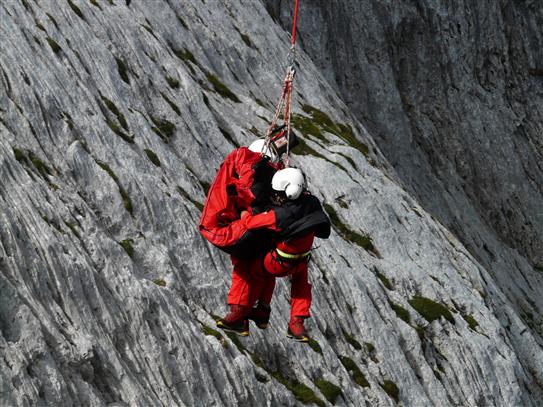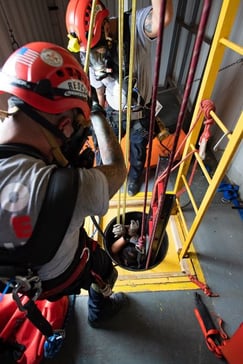
For those of you who are not in good shape and, perhaps, feel there isn’t enough time in the day to do anything about it, I sincerely hope you’ll reconsider and keep reading to see that it really doesn’t take much at all to make a positive change. And this change can be like a railroad locomotive; it may start slowly, but as momentum increases, so does the rate of positive change.
Here are my favorite tips that are simple to incorporate right now into your routine so you can start to look, feel, and perform better.
If you are like many people, you probably set your alarm to give you just enough time to get up, get dressed, eat, and head out the door, sometimes finishing that last bite of breakfast as you are driving to work. Here’s a little tip: Set the alarm fifteen minutes earlier.
This accomplishes several things:
• If you start your day with a morning stretch, that is a good base to build on. As you gain strength, you can eventually work in some pushups and crunches.
• Getting up earlier gives you a buffer before you start your work day, eliminating that stressful feeling of cutting your timing too close. Wouldn’t it be nice to start the day with less stress and that certain physical feeling of already having accomplished something before the workday even begins?
Do you use the elevator to go up one, two, or three floors? My bet is that in the time you wait for the elevator and all the stops you make, it would be nearly as fast to take the stairs. After getting into the stairs-over-elevator habit, you may find yourself going for five, then six, seven, or even ten stories.
If we are talking 20 stories or more, then yeah, I’ll give you a pass.
You don’t need to hire a personal trainer or even join a gym to get into really good shape. Look no further than the oldest cardio option known to man: running. For those of us with bad knees or other ailments that prevent running, other options include brisk walking, rollerblading, swimming, biking, and even dancing will burn off some of that extra weight.
Try a variety of activities that get your blood pumping! Maybe you’ll find there’s one thing you really get into, or maybe you prefer to mix it up. Point is, make a commitment to do something. It will be uncomfortable and there will be days when you want to skip your exercise time, so consider these two things that might help you out… accountability and distraction.
Accountability might mean you publicly declare your fitness goals to friends, family, and Facebook if that’s what it takes to keep you on track. A training partner can also provide accountability as you won’t want to let your partner down by skipping your workout. A training partner can also provide a distraction – it always helps to have someone running alongside you to talk with. Or maybe listening to music or podcasts help distract you; whatever might help you focus on something other than that voice in your head asking you to stop.
I am fortunate to live near several lakes and I have taken up rowing for my no-impact aerobic workout. Talk about involving nearly every muscle group along with the heart and lungs! This is one of the best calorie burners I have ever known, and the beauty is I am out on the lake at sunrise with the loons, ospreys, and eagles, the odd deer, turkey, fox, or mink on the shoreline, just enjoying the view of the mountains.
There are many resources available to us first responders, especially firefighters, who are looking to get fit. The 555 Fitness website has great lists of workouts, and if you follow them on Instagram you’ll get a new workout idea every day. The Firefighter Fitness Page offers a treasure trove of fitness tips and simple workout ideas that will fit right into your busy schedule.
Changing what we choose to eat is just a matter of education and some simple strategies, but don’t try to make wholesale changes overnight. It is best to develop habits that you can build slowly over time.
Radical diet changes almost always fail. Instead of jumping on the next bandwagon diet, resolve to make – and stick to – grocery lists full of items that are good for you, rather than “winging it” and running to McDonald's on your way home from work every day. When it comes to eating well, the old adage holds true: failing to plan means planning to fail.
The key to keeping a healthy diet is to do just a bit of research on the sort of foods that should go onto your list. The good news is there are plenty of resources to help guide you, like this list of healthy food options to help first responders perform better.
The next time you visit the grocery store, pay attention to the layout. I’ll bet you will notice that the healthy items tend to be on the outer perimeter of the store and the less healthy items are in the middle aisles. For example, if you are looking for nuts, see if there are choices near, or in, the produce section on the edge of the store. Then compare the nuts in the bins or light packaging to the choice of nuts on the snack aisle. The nuts from the produce section will likely have few or no additives, whereas the nuts from the snack aisle will be loaded with oils and all sorts of hard-to-pronounce ingredients.
Always assess your food for its nutritional quality. Limit, or better yet, flat-out avoid processed foods and packaged items with long lists of ingredients on the label. The fewer the ingredients on the label, generally the healthier the item will be. Also, go easy on the carbs. Most of us love pasta in all its forms, but there are alternatives to pasta that taste great using the same marinara sauce or whatever your favorite topping may be. Consider couscous or quinoa as a pasta alternative.
Don’t worry too much about the few fun and tasty items that still manage to make it onto your list. Even some junk-food snacks are acceptable from time to time. We are human, after all, right? Just be sure that they are special treats and not a daily indulgence!
This is where the rubber meets the road. Stick to your list! Go shopping after you’ve eaten, not when you are starving and craving processed snacks like cookies or chips. Shopping on an empty stomach spells trouble for most of us.
Remember that the best “diet” is the one that fits your lifestyle. Focus on eating meals loaded with nutrients, and don’t stress if you deviate from time to time. If you set an unattainable standard at the outset, you are less likely to stick with it.
First of all, we need to get enough sleep. A report from the International Association of Fire Chiefs (IAFC) called The Effects of Sleep Deprivation on Fire Fighters and EMS Responders found that sleep deprivation affects our attentiveness levels, our mental functioning, and our energy, and it can lead to health issues like obesity and cardiovascular disease.
With our long and strenuous work hours and the stress involved in our jobs, this can be extremely dangerous to our health. It is critical to sleep enough in addition to eating right and exercising to protect ourselves from life-threatening health problems.
Ok, but how? Try setting an alarm for your bedtime. If you’re the sort of person that puts off bedtime because you’re trying to finish up a few things you’ve been working on, try putting those things on a list. That way you won’t worry about forgetting them, and you can tackle them fresh the next day.
Traveling disrupts our routines, and unless you stay in a suite with a well-equipped kitchen, the meal choices are limited to restaurant offerings and complimentary hotel breakfasts.
It is tough to resist the fancy menu photos and the aroma of restaurants but make a promise to yourself that you will follow the guidelines for the vast majority of your meals out. It isn’t the end of the world if you slip now and then, especially if you are traveling with a group. It is nice to get together socially and have a nice meal, but make that the exception, not the norm.
Most hotel rooms are equipped with a drip coffee maker and a microwave oven. For a healthy breakfast, scoop some servings of oatmeal into Ziploc bags before leaving home. Mix in some cinnamon and chopped nuts, or grab an apple once you arrive at your destination and chop it up for some added flavor and vitamins. Consider making a quick stop at the grocery store to buy some Greek yogurt and fruit like strawberries, blueberries or bananas. Mix them together for a high protein breakfast loaded with vitamins. If your work frequently has you dining on the road, here is a resource to help you make healthier choices.
As far as your workout routine is concerned, remember that the time before work starts is yours. If you get into the habit when you’re at home of doing some stretching and basic calisthenics first thing in the morning, it will be much easier to do the same thing before showering and heading out of your hotel room. If you have a say in your lodging arrangements, try to find a hotel with either a well-equipped fitness center or one that has an arrangement with a local gym. If you travel to the same locations repeatedly, find the lodging that best fits your needs.
I hope you feel, as I do, that we all benefit from being fit. We feel better about ourselves. We are less prone to injury. We are less stressed. And most importantly of all, we are able to perform better and serve our rescue subjects well. I hope that in reading this you can take some or all of these tips, or even expand upon them, and start heading in a direction of improved fitness in the new year and beyond.

 If that’s not motivation enough, its January resolution time! That said, remember that this is a journey… you probably aren’t going to see radical changes right away, so don’t get discouraged. Take pride in every day you work toward your fitness goals, and if you fall off the horse and into a hot fudge sundae one weekend, don’t despair – just get back on track and stay with it!
If that’s not motivation enough, its January resolution time! That said, remember that this is a journey… you probably aren’t going to see radical changes right away, so don’t get discouraged. Take pride in every day you work toward your fitness goals, and if you fall off the horse and into a hot fudge sundae one weekend, don’t despair – just get back on track and stay with it! Introduction: According to the Chemical Safety Board “Contractor Safety Digest,” the agency has conducted several fatal investigations where insufficient safety requirements for contractor selection and oversight were found to be causal to the incidents.
Introduction: According to the Chemical Safety Board “Contractor Safety Digest,” the agency has conducted several fatal investigations where insufficient safety requirements for contractor selection and oversight were found to be causal to the incidents.  That old adage “You get what you pay for,” holds a lot of truth in so many instances, and especially so with contractors. Now I am not saying that you will never get high quality at a low price, but it is rare. When you put a job out for bid, it is important to list the specifications for the work or product that you need the bidders to meet, but equally as important is to list other specifications besides the job or product scope, and one of these specifications is safety.
That old adage “You get what you pay for,” holds a lot of truth in so many instances, and especially so with contractors. Now I am not saying that you will never get high quality at a low price, but it is rare. When you put a job out for bid, it is important to list the specifications for the work or product that you need the bidders to meet, but equally as important is to list other specifications besides the job or product scope, and one of these specifications is safety. A hiring client can rely on the various sites to set default requirements for the type of work they need and the associated criteria that must be met, or the hiring client can modify or specify custom needs that must be met. The scoring for potential contractors typically is graded on some sort of easy to view scale such as green-meets all requirements, yellow-meets most requirements but falls short on one or more non-critical criteria, or red-fails to meet basic or critical criteria. Some score it like school grades A, B, C, D, F.
A hiring client can rely on the various sites to set default requirements for the type of work they need and the associated criteria that must be met, or the hiring client can modify or specify custom needs that must be met. The scoring for potential contractors typically is graded on some sort of easy to view scale such as green-meets all requirements, yellow-meets most requirements but falls short on one or more non-critical criteria, or red-fails to meet basic or critical criteria. Some score it like school grades A, B, C, D, F.  Well, there is another old adage that goes like this “Who pays the piper, calls the tune.” Once you have engaged with a contractor, it is imperative that they understand your expectations regarding safety and accept that as part of the job performance. This is the time to ensure that not only legislated safety requirements are met, but also any hiring client safety policies that may exceed OSHA are also explained and understood.
Well, there is another old adage that goes like this “Who pays the piper, calls the tune.” Once you have engaged with a contractor, it is imperative that they understand your expectations regarding safety and accept that as part of the job performance. This is the time to ensure that not only legislated safety requirements are met, but also any hiring client safety policies that may exceed OSHA are also explained and understood. Refineries, plants and manufacturing facilities have a wide range of permit-required confined spaces – some having only a few, while others may have hundreds. Some of these spaces may be relatively open and straightforward while others are congested and complex, or at height. With this in mind, are all your bases covered? Can your rescue team (or service) safely and effectively perform a rescue from these varying types of spaces? Or, are you left exposed? And, how can you be sure?
Refineries, plants and manufacturing facilities have a wide range of permit-required confined spaces – some having only a few, while others may have hundreds. Some of these spaces may be relatively open and straightforward while others are congested and complex, or at height. With this in mind, are all your bases covered? Can your rescue team (or service) safely and effectively perform a rescue from these varying types of spaces? Or, are you left exposed? And, how can you be sure?


 Our congratulations to the Burlington (Iowa) Fire Department on a successful grain bin rescue that happened in their community back in May of this year (2018). The incident was reported on Firehouse.com.
Our congratulations to the Burlington (Iowa) Fire Department on a successful grain bin rescue that happened in their community back in May of this year (2018). The incident was reported on Firehouse.com.


